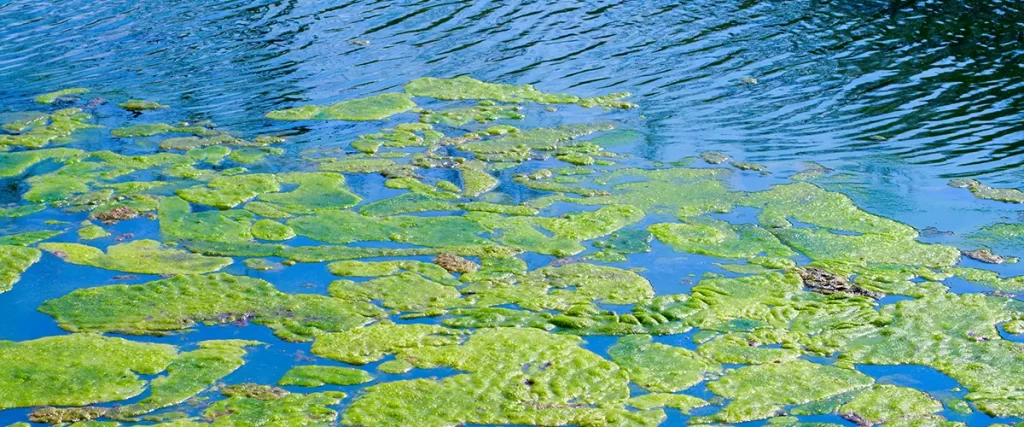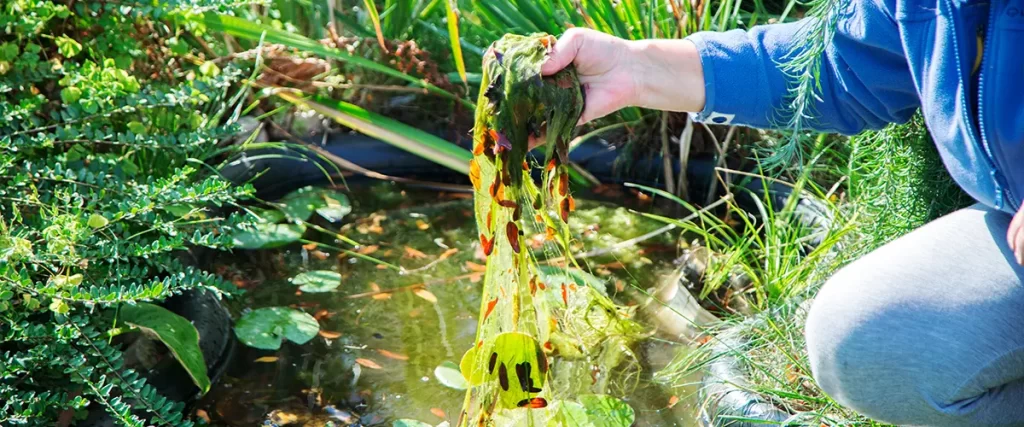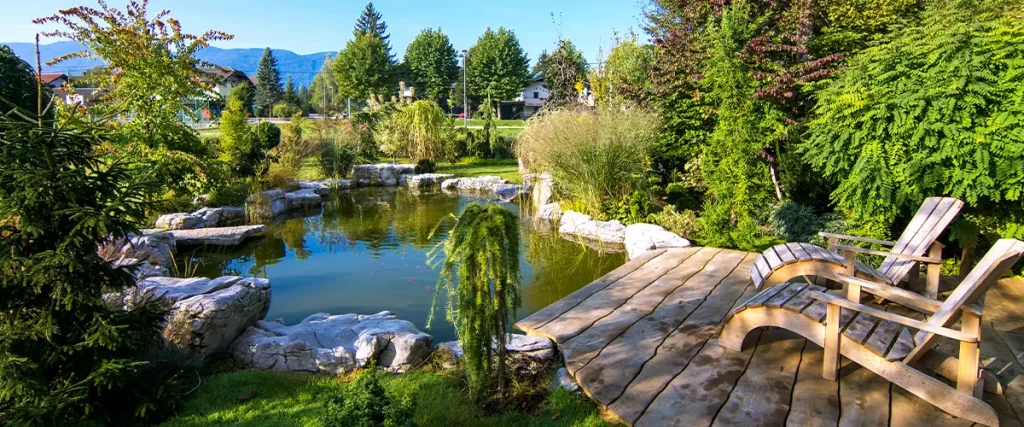Understanding Algae Blooms in Central Florida Ponds
If you own a pond in Central Florida, you know how quickly algae can take over. The region’s hot, humid climate and frequent summer rains create the perfect conditions for excessive algae growth, turning crystal-clear ponds into murky green messes. Left unchecked, algae blooms can disrupt ecosystems, harm fish populations, and create unpleasant odors.
But here’s the good news: with the right strategies, you can keep your pond clean and healthy year-round. Let’s dive into what causes algae blooms, how to prevent them, and the best solutions for maintaining a balanced pond ecosystem in Florida’s challenging climate.

What Causes Algae Blooms in Central Florida?
Algae blooms don’t just happen overnight—they’re fueled by a combination of environmental factors that are especially common in Florida.
Key Causes of Algae Growth:
- Warm Temperatures: Florida’s year-round warm weather speeds up algae growth.
- Excess Nutrients: Runoff from fertilizers, animal waste, and decaying organic matter increases nitrogen and phosphorus levels.
- Still Water: Stagnant ponds allow algae to thrive without natural water movement to disrupt growth.
- Sunlight Exposure: Florida’s intense sun provides the perfect conditions for algae photosynthesis.
- Low Oxygen Levels: A lack of circulation reduces oxygen, creating an environment where algae outcompete beneficial aquatic plants.
How to Prevent Algae Blooms in Your Pond
Stopping algae before it takes over is far easier than getting rid of it once it’s out of control. Prevention involves a combination of natural, mechanical, and chemical solutions.
Natural Prevention Methods:
- Introduce Aeration Systems – Oxygen-rich water discourages algae growth while promoting healthy bacteria.
- Add Beneficial Plants – Floating and submerged plants absorb excess nutrients, cutting off algae’s food supply.
- Stock Algae-Eating Fish – Grass carp, tilapia, and koi help control algae naturally.
- Use Natural Shade – Planting trees or adding floating plants like lilies can block excessive sunlight.
Mechanical & Chemical Solutions:
- Pond Circulators & Fountains – Keep water moving to prevent stagnation.
- Barley Straw Treatments – Releases natural compounds that slow algae growth.
- Algaecides & Water Treatments – Use chemical treatments carefully to avoid harming fish and beneficial bacteria.

Best Tools & Products for Algae Control in Florida Ponds
When algae blooms get out of control, it’s time to bring in professional-grade solutions. Here are some of the best manufacturers of pond management products for Florida homeowners.
Top Algae Control Product Manufacturers:
- Airmax – Specializes in pond aeration systems that improve water quality and prevent algae buildup.
- Aquascape – Offers natural water treatments, beneficial bacteria, and aeration solutions.
- SePRO – Industry leader in EPA-approved algaecides designed for safe and effective control of nuisance algae.
- Pond King – Provides floating fountains and aeration systems that help oxygenate and circulate pond water.
- EasyPro Pond Products – Known for UV clarifiers, natural barley straw treatments, and aeration kits to keep ponds clear.
Seasonal Pond Care for Year-Round Clarity
In Florida’s climate, pond maintenance isn’t just a one-time effort. Each season brings unique challenges, so having a year-round strategy is key.
Spring & Summer Maintenance:
- Increase aeration and circulation to prevent stagnation.
- Monitor nutrient levels and minimize fertilizer runoff.
- Trim aquatic plants to keep algae from taking over.
- Use UV clarifiers or biological treatments to reduce algae growth.
Fall & Winter Maintenance:
- Remove leaves and organic debris to prevent nutrient buildup.
- Reduce feeding of fish to avoid excess waste.
- Maintain aerators to keep oxygen levels stable.
- Apply barley straw or beneficial bacteria treatments to prepare for spring growth.
FAQ: Keeping Your Pond Algae-Free
What is the best way to naturally control algae?
The best natural method is aeration, along with adding beneficial plants and algae-eating fish like grass carp.
Are chemical treatments safe for my fish and plants?
Yes, when used correctly. Always choose EPA-approved algaecides and follow dosage instructions carefully.
How can I prevent fertilizer runoff from feeding algae?
Use buffer zones with grass or gravel around your pond and switch to phosphorus-free fertilizers.
Do pond fountains help control algae?
Yes! Fountains improve oxygen levels and circulation, making it harder for algae to thrive.
How often should I clean my pond?
Skimming weekly and doing a deep clean every 6 months helps prevent excess organic buildup.
Can too many fish contribute to algae problems?
Yes—overstocking leads to excess fish waste, which adds nutrients that feed algae growth.

Final Thoughts: A Healthy Pond All Year in Central Florida
With Florida’s warm climate, algae blooms can feel like a constant battle—but with the right prevention methods, aeration, and treatment solutions, you can keep your pond clear, healthy, and balanced year-round.
Need help managing your pond’s algae problem? Contact us at (407) 480-0713 today for expert advice and customized pond care solutions here at Site Pros Landscaping.
